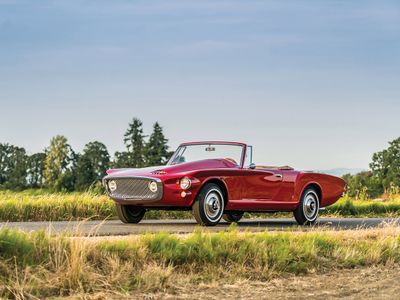Plymouth XNR



"Never before has the American public seen off-center styling such as that characterizing the Plymouth XNR." This was how the Plymouth-De Soto-Valiant Division introduced their Plymouth badged Corvette-competitor to the public on March 1, 1960. Exner's proposed Corvette-killer, influenced by old race cars, such as the Jaguar D-Type, featured an unusual asymmetrical design. A large off-set hood scoop, concentrated on the driver's side of the car, led to an extended blister fairing that ran down the hood and into the cowl. The fairing was picked up in the headrest, where it flared back into a stabilizer fin that culminated in a bold chrome asymmetric cross. The cross was a striking design made from the intersection of bumper blade and fin. Originally known as the Plymouth Asymmetrica, the car changed name to XNR, after its designer, during the construction phase. Once revealed, the critics thought that the asymmetrical design it employed was purely a gimmick that could have no practical application. Exner disagreed, and according to Chrysler's promo brochure, the XNR introduced Asymmetrical Design; "an entirely fresh element in automotive aerodynamics which may well affect the shape of cars to come."
Did you enjoy this article?
Kustomrama is an encyclopedia dedicated to preserve, share and protect traditional hot rod and custom car history from all over the world.
- Help us keep history alive. For as little as 2.99 USD a month you can become a monthly supporter. Click here to learn more.
- Subscribe to our free newsletter and receive regular updates and stories from Kustomrama.
- Do you know someone who would enjoy this article? Click here to forward it.
Can you help us make this article better?
Please get in touch with us at mail@kustomrama.com if you have additional information or photos to share about Plymouth XNR.
This article was made possible by:
SunTec Auto Glass - Auto Glass Services on Vintage and Classic Cars
Finding a replacement windshield, back or side glass can be a difficult task when restoring your vintage or custom classic car. It doesn't have to be though now with auto glass specialist companies like www.suntecautoglass.com. They can source OEM or OEM-equivalent glass for older makes/models; which will ensure a proper fit every time. Check them out for more details!
Do you want to see your company here? Click here for more info about how you can advertise your business on Kustomrama.





